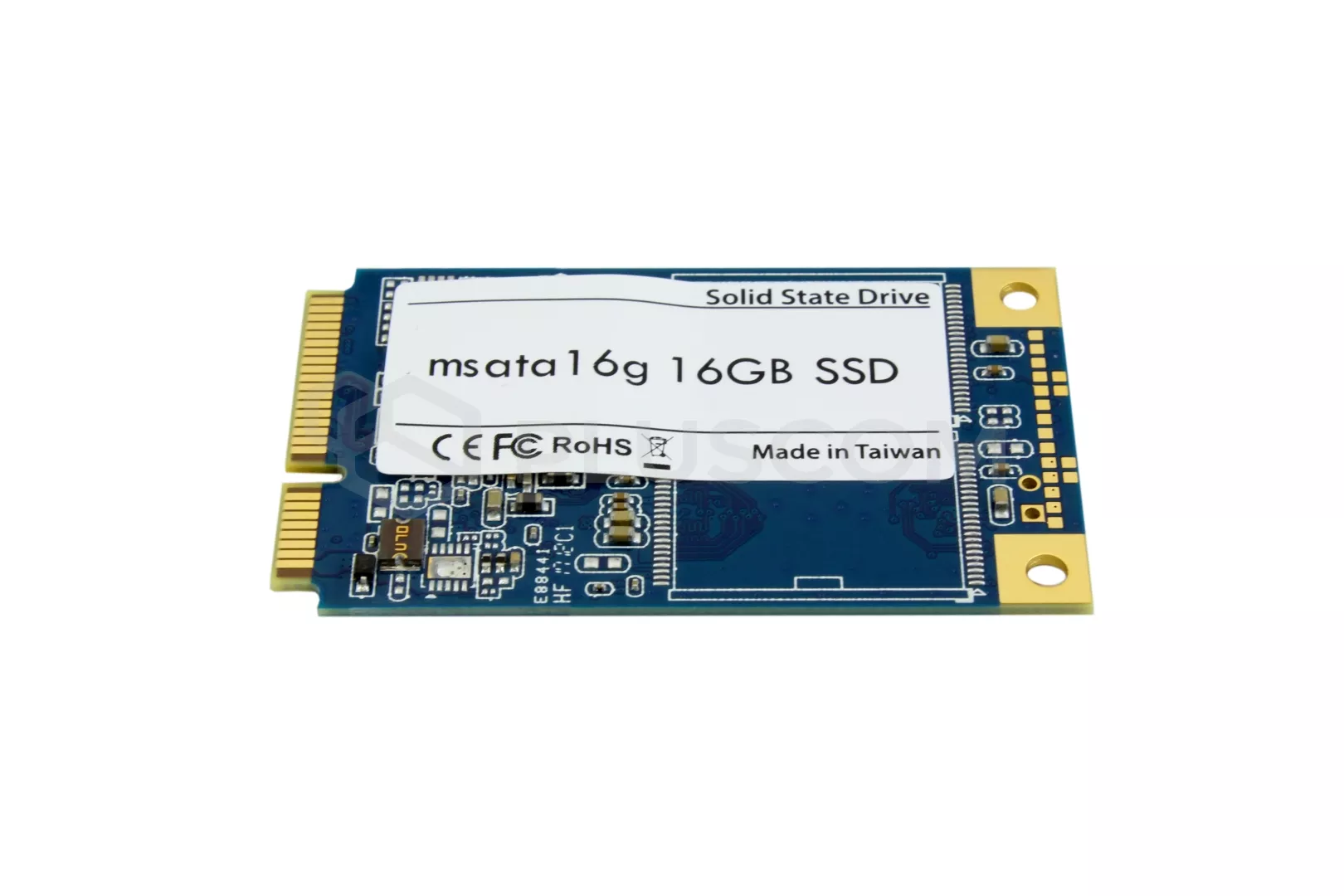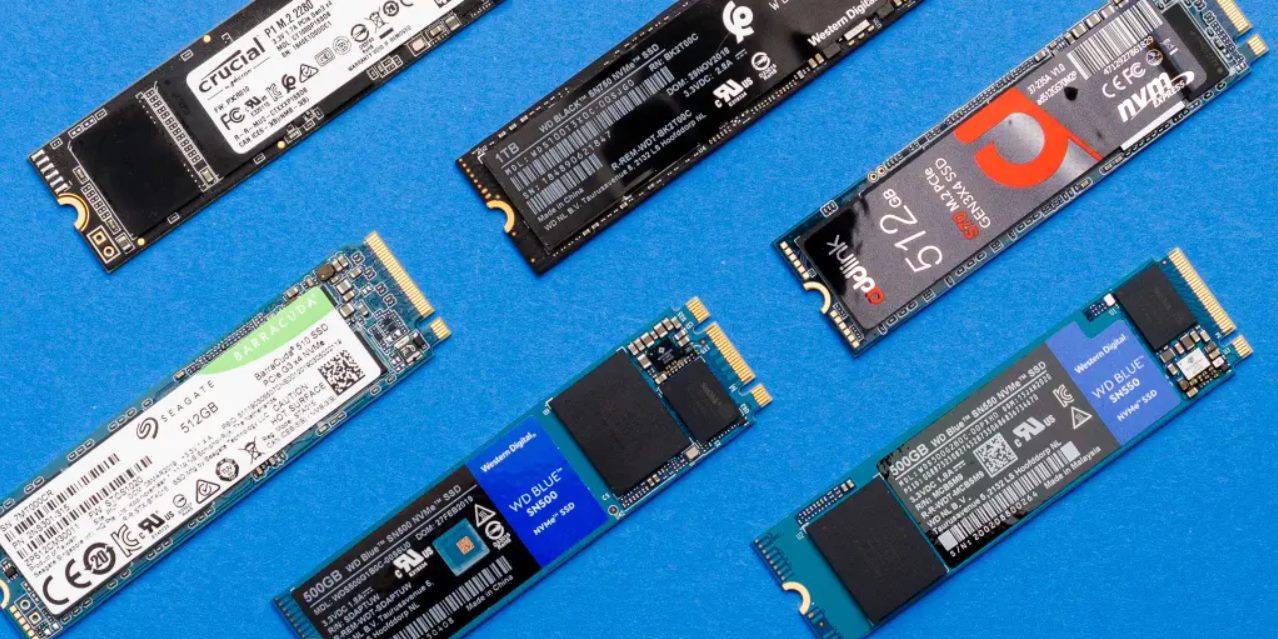Introduction
Welcome to the world of solid state drives (SSDs)! If you’re wondering what a 16GB solid state drive is, you’ve come to the right place. SSDs have revolutionized the storage industry with their lightning-fast performance and reliability. Gone are the days of sluggish hard disk drives (HDDs) that take ages to load files and applications. SSDs are here to provide a significant boost to your computer’s speed and efficiency.
Before we delve into the details of a 16GB SSD, let’s first understand what exactly a solid state drive is and how it differs from a traditional hard disk drive. Unlike HDDs, which use spinning disks and mechanical read/write heads to store and access data, SSDs rely on flash memory technology.
SSDs store data on NAND flash memory chips, which are much faster than the spinning disks used in HDDs. This enables SSDs to deliver lightning-fast read and write speeds, resulting in quicker boot times, faster file transfers, and snappier overall system performance.
Now that we have a basic understanding of what an SSD is, let’s dive deeper into the inner workings of these incredible storage drives. In the next section, we’ll explore how an SSD functions and why it offers significant advantages over traditional HDDs.
What is a Solid State Drive (SSD)?
A solid state drive (SSD) is a type of storage device that has gained immense popularity in recent years. Unlike traditional hard disk drives (HDDs) that use spinning disks, an SSD utilizes a solid-state memory to store and retrieve data quickly and efficiently. This memory is made up of NAND flash chips, which allow for non-volatile storage, meaning the data remains even when the power is turned off.
One of the key differences between an SSD and an HDD is the absence of moving parts in an SSD. While an HDD relies on mechanical components such as a spinning platter and read/write heads, an SSD uses electronic circuits to store and retrieve data. This lack of moving parts in an SSD makes it more resistant to physical damage and less prone to mechanical failures.
The absence of moving parts also contributes to the exceptional speed of SSDs. Unlike HDDs, which require time for the mechanical components to physically move to the desired data location, an SSD can access data almost instantaneously. This translates into significantly faster boot times, shorter application load times, and improved overall system responsiveness.
Another advantage of SSDs is their high durability. Without the need for moving parts, SSDs are less susceptible to wear and tear, making them more reliable in the long run. Additionally, the lack of spinning disks eliminates the risk of mechanical failure due to physical shock or vibration, making SSDs ideal for portable devices such as laptops and tablets.
SSDs also consume less power compared to HDDs, which can be beneficial for laptops and other battery-powered devices. The absence of moving parts significantly reduces the energy required for operation, resulting in improved battery life and lower power consumption.
In summary, a solid state drive (SSD) is a faster, more reliable, and power-efficient alternative to traditional hard disk drives. By utilizing NAND flash memory and eliminating moving parts, SSDs provide lightning-fast performance, exceptional durability, and reduced power consumption. Whether you’re a gamer, a content creator, or simply a casual user, upgrading to an SSD can greatly enhance your computing experience.
How does an SSD work?
Understanding the inner workings of a solid state drive (SSD) can give you insights into why it outperforms traditional hard disk drives (HDDs) in terms of speed and efficiency. An SSD relies on NAND flash memory to store data electronically. Let’s take a closer look at how an SSD operates:
1. NAND Flash Memory: The key component of an SSD is NAND flash memory, which is a type of non-volatile storage. It retains data even when the power is turned off, making it suitable for long-term storage. NAND flash memory is organized into cells, with each cell consisting of multiple layers and storing multiple bits of data.
2. Read and Write Operations: When data needs to be read from or written to an SSD, a controller chip manages these operations. The controller is responsible for sending electrical pulses to the NAND flash memory, allowing it to store data as electrical charges in the memory cells. These charges represent binary values, 0s, and 1s.
3. Data Organization: SSDs use a technique called wear leveling to distribute write operations evenly across the memory cells. Wear leveling prevents specific cells from being written to excessively, which can lead to faster wear and reduced lifespan. This technique improves the overall longevity of the SSD.
4. Data Retrieval: When data needs to be accessed from an SSD, the controller chip locates the specific memory cells in which the data is stored. Since SSDs have no mechanical components, the read process is almost instantaneous. The controller retrieves the electrical charges stored in the memory cells, converts them into binary data, and presents it to the computer’s processor.
5. Trim Command: The trim command is an important feature of SSDs. When files are deleted or modified, the trim command informs the controller which memory cells are no longer in use. This allows the controller to optimize future write operations and maintain efficient performance over time.
In summary, an SSD uses NAND flash memory and a controller chip to store and retrieve data. The absence of moving parts in an SSD makes it faster, more durable, and more power-efficient than traditional HDDs. Understanding how an SSD works can help you appreciate its advantages and make informed decisions when considering storage options for your computer or other devices.
Benefits of using an SSD
Switching from a traditional hard disk drive (HDD) to a solid state drive (SSD) comes with numerous benefits that can greatly enhance your computing experience. Let’s explore some of the key advantages of using an SSD:
1. Increased Speed: One of the most significant benefits of using an SSD is the incredible speed it offers. SSDs have faster data transfer rates, resulting in quicker boot times, faster application launches, and seamless multitasking. Tasks that used to take minutes with an HDD, such as loading large files or running resource-intensive software, can be completed in seconds with an SSD.
2. Improved Performance: SSDs not only provide faster speeds but also deliver improved overall system performance. With an SSD, you’ll experience smooth and responsive performance, whether you’re gaming, editing videos, or working on complex projects. Applications will launch quickly, and data access will be almost instantaneous, resulting in a more efficient and productive workflow.
3. Enhanced Reliability: HDDs are more prone to physical damage and mechanical failures due to their spinning disks and moving parts. On the other hand, SSDs have no mechanical components, making them less vulnerable to mechanical failures. This increased reliability ensures that your data is safer and reduces the risk of unexpected data loss.
4. Durability: SSDs are built to withstand shocks, vibrations, and other physical impacts, making them ideal for use in laptops and portable devices. The absence of moving parts in an SSD means that it can withstand accidental drops or bumps without risking data loss. This durability makes SSDs a reliable storage solution for users who are always on the go.
5. Energy Efficiency: SSDs consume less power compared to HDDs, which makes them more energy efficient. The absence of spinning disks and read/write heads significantly reduces the energy required for operation, resulting in longer battery life for laptops and reduced power consumption for desktop computers. This not only benefits the environment but also contributes to lower electricity bills.
6. Noiseless Operation: HDDs produce noticeable noise due to their spinning disks. In contrast, SSDs operate silently since they have no moving parts. This makes SSDs perfect for environments where noise is a concern, such as recording studios or libraries.
7. Compact and Lightweight: SSDs are highly compact and lightweight compared to traditional HDDs. This makes them ideal for slim laptops, ultrabooks, and other small form factor devices where space and weight are crucial considerations.
In summary, using an SSD brings a multitude of benefits, including increased speed, improved performance, enhanced reliability, durability, energy efficiency, noiseless operation, and compactness. Upgrading to an SSD can transform your computing experience, providing you with a faster, more efficient, and reliable storage solution.
What is the storage capacity of a 16GB SSD?
A 16GB solid state drive (SSD) refers to the storage capacity of the SSD, indicating how much data it can hold. In the world of SSDs, the storage capacity is measured in gigabytes (GB). However, it’s important to note that the actual usable storage capacity of a 16GB SSD may be slightly less due to formatting and overhead.
A 16GB SSD is considered a small storage capacity by today’s standards. It is suitable for specific use cases where a limited amount of storage is required. This capacity is often found in embedded systems, lightweight computing devices, or as a secondary storage option in addition to a larger capacity SSD or HDD.
While a 16GB SSD may limit the amount of data you can store, it does have its advantages. With a smaller capacity, you can expect faster read and write speeds due to a lesser amount of data to manage. This can be beneficial if you primarily use your SSD for running a specific application or storing essential files that you frequently access. Additionally, the smaller capacity drives tend to be more affordable, making them an attractive option for budget-conscious users.
However, it’s crucial to assess your storage needs before opting for a 16GB SSD. Consider the types of files you’ll be storing and the space they require. Operating systems, applications, and multimedia files can quickly consume storage space, so it’s important to ensure that 16GB will be sufficient for your needs. If your requirements exceed this capacity or if you anticipate needing more storage in the future, it might be worth considering a larger SSD to avoid running out of space.
If you find yourself running out of storage space on a 16GB SSD, there are a few options you can consider. First, you can prioritize which files, applications, or data you keep on the SSD and move less frequently used or larger files to an external hard drive or cloud storage. Alternatively, you can look into upgrading to a larger capacity SSD, which will provide you with ample space to store your files without having to compromise on what you keep on your SSD.
In summary, a 16GB SSD offers a limited storage capacity suitable for specific use cases where a smaller amount of storage is required. While it may not be sufficient for storing large amounts of data, it can provide faster speeds and affordability. Assess your storage needs carefully to determine if a 16GB SSD is suitable for your requirements or if upgrading to a larger capacity SSD is necessary.
Uses and limitations of a 16GB SSD
A 16GB solid state drive (SSD) has specific use cases where it can be advantageous, but it also comes with inherent limitations due to its smaller storage capacity. Let’s explore some common uses and limitations of a 16GB SSD:
Uses:
1. Operating System: A 16GB SSD can be utilized as the primary storage device for hosting the operating system (OS) of a lightweight computing device or embedded system. With the OS installed on the SSD, you can expect faster boot times, snappier performance, and quicker application launches.
2. Essential Files and Applications: The limited storage of a 16GB SSD makes it suitable for storing essential files and applications that you frequently access. If you primarily use your computer for web browsing, document editing, or basic multimedia consumption, a 16GB SSD can provide the necessary storage to support these tasks effectively.
3. Secondary Storage: A 16GB SSD can also serve as secondary storage alongside a larger capacity SSD or HDD. You can use it to store specific files, such as temporary files, cache, or application data, while keeping the primary storage space free for critical applications or larger files.
Limitations:
1. Limited Storage Space: The most evident limitation of a 16GB SSD is its restricted storage capacity. Storing large files, multimedia collections, or extensive software applications can quickly consume the available space. It is important to evaluate your storage needs and ensure that 16GB will be sufficient for your intended usage.
2. Space Constraints for OS and Updates: Operating systems and software updates often require a significant amount of storage space. With a 16GB SSD, you need to carefully manage the available storage to accommodate these updates without running out of space. Continuous monitoring and optimization of storage usage are necessary to ensure smooth operation.
3. Limited Multimedia Storage: If you work extensively with multimedia files, such as high-resolution images, videos, or large audio collections, the storage capacity of a 16GB SSD may prove insufficient. These types of files require substantial space, and you may need to consider external storage options or upgrading to a larger capacity SSD.
4. Price per GB: The cost per gigabyte (GB) of storage for smaller capacity SSDs tends to be higher compared to larger capacity models. This is because the manufacturing process and technology used for higher capacity SSDs allow for economies of scale. Consider the value proposition and cost-effectiveness of a 16GB SSD compared to larger capacity options before making a purchase decision.
Despite its limitations, a 16GB SSD can still be a viable solution for specific use cases that prioritize speed, efficiency, and affordability over extensive storage capacity. Understanding the uses and limitations of a 16GB SSD will help you assess whether it aligns with your storage needs and whether you should consider alternative storage solutions.
Is a 16GB SSD enough for you?
When considering whether a 16GB solid state drive (SSD) is sufficient for your needs, it’s crucial to evaluate your storage requirements and intended usage. The limited storage capacity of a 16GB SSD may be suitable for certain scenarios, while it may fall short in others. Here are some factors to consider in determining if a 16GB SSD is enough for you:
Usage:
1. Basic Computing: If your primary usage involves web browsing, document editing, and light multimedia consumption, a 16GB SSD can provide enough storage for essential files and applications. However, if you frequently work with large files, multimedia projects, or resource-intensive software, you may need a larger capacity SSD or consider external storage options.
2. Operating System: Installing the operating system (OS) on a 16GB SSD can result in faster boot times and better overall system performance. However, keep in mind that the OS and future updates may consume a significant portion of the available storage. Consider the space requirements of your OS and its future updates before opting for a 16GB SSD as your primary storage.
Storage Needs:
1. File Size and Quantity: Assess the size and number of files you typically work with. If you deal with small files or have minimal storage needs, a 16GB SSD may be sufficient. However, if you frequently handle large files, such as high-resolution images or HD videos, or if you require extensive storage for a music or video library, a larger capacity SSD would be more suitable.
2. Software and Applications: Evaluate the storage space required for your preferred software and applications. Resource-intensive software, games, or creative applications may demand considerable storage, which could exceed the capacity of a 16GB SSD. Consider the space required for your essential software to ensure it can comfortably fit within the available storage space.
Growth and Future Needs:
Consider your future storage needs and growth potential. If you anticipate an increase in data usage or intend to install additional software and applications over time, it would be wise to opt for a larger capacity SSD upfront. This will provide you with enough room for future expansion and prevent you from running out of storage space down the line.
Budget Considerations:
While a 16GB SSD may be more economical compared to larger capacity options, it’s essential to evaluate the overall value for your specific usage. Calculate the cost per gigabyte (GB) of the 16GB SSD and compare it with the cost per GB of higher capacity SSDs. Sometimes, investing a little more upfront for a larger capacity SSD can offer better storage value in the long run.
In summary, whether a 16GB SSD is sufficient for you depends on your specific usage, storage needs, growth potential, and budget considerations. Assess your requirements carefully, considering factors like file size, software needs, and future expansion plans. If your needs exceed the limitations of a 16GB SSD, it may be prudent to explore larger capacity options to ensure ample storage space for your data and applications.
Upgrading to a larger SSD
If you find that the storage capacity of a 16GB solid state drive (SSD) is insufficient for your needs, upgrading to a larger SSD can provide you with the necessary storage space and improved performance. Here are some key considerations and steps to follow when upgrading to a larger SSD:
Evaluate Your Storage Needs:
Assess your current and future storage requirements. Consider the types of files you typically handle, the size of your software applications, and your anticipated growth in data usage. This evaluation will help you determine the appropriate storage capacity for your upgraded SSD.
Choose the Right Capacity:
Select a larger capacity SSD based on your storage needs and budget. SSDs are available in a wide range of capacities, from 128GB to several terabytes. Consider factors such as the size of your existing data, the space required for future growth, and your budget constraints when deciding on the new SSD capacity.
Backup Your Data:
Prior to upgrading, it’s essential to back up your data. Make sure you have a copy of all your important files and documents on an external storage device or in the cloud. This ensures that your data is secure and can be easily restored after the upgrade.
Clone or Fresh Installation:
When upgrading to a larger SSD, you have two options for transferring your data: cloning or performing a fresh installation. Cloning involves duplicating your existing SSD or HDD to the new SSD, including the operating system, software, and files. This method preserves your settings and data. Alternatively, a fresh installation requires reinstalling the operating system and software applications onto the new SSD and transferring your files manually. Decide which method suits your needs and preferences.
Install the New SSD:
Physically install the new SSD into your computer or have a professional do it for you if you’re not confident in doing it yourself. Ensure that your computer is powered off and unplugged before opening the case and connecting the new SSD. Follow the manufacturer’s instructions or seek assistance from a technician to ensure a successful installation.
Restore Your Data:
If you cloned your existing drive, simply connect the new SSD and power on your computer. Your system should boot up with all your files and settings intact. If you performed a fresh installation, reinstall the operating system and necessary software applications onto the new SSD. Then, transfer your files from the backup storage device or cloud storage to the new SSD.
Optimize and Enjoy:
Once the new SSD is installed and your data is restored, take some time to optimize your system settings. Ensure that your operating system and software are up to date, and configure your SSD for optimal performance. Enjoy the benefits of improved storage capacity, faster speeds, and enhanced productivity that come with your upgraded SSD.
In summary, upgrading to a larger SSD involves evaluating your storage needs, selecting the appropriate capacity, backing up your data, deciding on cloning or fresh installation, physically installing the new SSD, restoring your data, and optimizing your system. Following these steps will help ensure a smooth transition and provide you with the necessary storage space and improved performance for your computing needs.
Conclusion
Solid state drives (SSDs) have revolutionized storage technology, offering faster speeds, improved reliability, and enhanced performance compared to traditional hard disk drives (HDDs). While a 16GB SSD provides limited storage capacity, it can serve specific purposes and be a cost-effective option in certain scenarios.
A 16GB SSD can be suitable for basic computing tasks, hosting the operating system, and storing essential files and applications. It offers advantages such as faster read and write speeds, increased durability, energy efficiency, and noiseless operation. However, it’s important to assess your storage needs and consider the limitations of a 16GB SSD, particularly if you work with large files, resource-intensive software, or extensive multimedia collections.
If you find that a 16GB SSD falls short of your storage requirements, upgrading to a larger capacity SSD is an option worth considering. Evaluate your storage needs, choose the appropriate capacity, back up your data, decide on the cloning or fresh installation method, physically install the new SSD, restore your data, and optimize your system settings to enjoy the benefits of an upgraded SSD.
Remember, the key is to strike a balance between storage capacity, performance, and budget. By understanding your needs and making informed decisions, you can choose the right SSD solution that optimizes both storage space and performance to enhance your computing experience.
Whether you decide to stick with a 16GB SSD or upgrade to a larger capacity, SSD technology offers significant advantages over traditional HDDs. The improved speed, reliability, and efficiency can greatly benefit your day-to-day tasks and productivity. Embrace the power of solid state drives and enjoy the enhanced performance they bring to your computing experience.

























